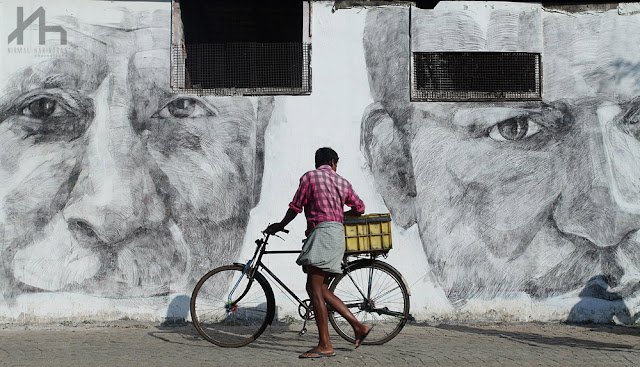The most ancient European building in India. The Pallipuram Fort aka Ayikotta built in AD 1503 by the Portuguese, the fort played a significant role in guarding the trade ships carrying spices as well as securing prime position in battling any foreign entry.
“... It was completed in 1508 to hold the entrance to the back-water. It was garrisoned by 20 men. Each of its octagonal facets was pierced for cannon. This is the first European building in India.”
Source: Extract from the letter of Mr. A Galletti ICS to the resident of Travancore and Kochi.
This gave the Portuguese control over spice trade from India and went on to built the Cranganore fort at the mouth of river Periyar which became another significant control point for trade and battles.
For info on Cranganore fort, refer previous post : http://kochimuziris.blogspot.in/2012/12/remains-of-cranganore-fort.html
During the same period, Fort Immanuel was also built in the modern day Fort Kochi region, the ruins of which can still be found near the Fort Kochi beach area.
One can feel an ancient European memory of Muziris by the very look of it.
The entrance into the out post. The fort was constructed using laterite, chunam and wood and the walls plastered using mortar.
The stone cellar inside Pallipuram fort which was used to store gun powder. Some of the locals believe that this cellar had a secret passage that connected the fort to Cheraman Juma Masjid in Kodungallur or the Cranganore fort or either.
The walls of Pallipuram fort from the inside over grown with vegetation and algae. The echoes of gun shots are long lost.
Fishing boats anchored near to the Pallipuram fort area. Several hundreds of trade ships and battle ships must have passed this year during the 16th century.
In 1663, the Dutch army took control over the fort and later in 1798 the then Travancore Maharaja purchased the fort from Dutch under and agreement and today the Fort is preserved by the state Archaeology department.
How to get there : The easiest route is via the Vypin - Munambam road. Before reaching the Pallipuram market, on the right side of the road one can find a narrow entrance fenced on both sides which leads to the Fort.
https://maps.google.co.in/maps?hl=en&newwindow=1&q=palliport%20fort&um=1&ie=UTF-8&sa=N&tab=wl








.jpg)


.jpg)
.jpg)












.jpg)

.jpg)
.jpg)




.jpg)
















